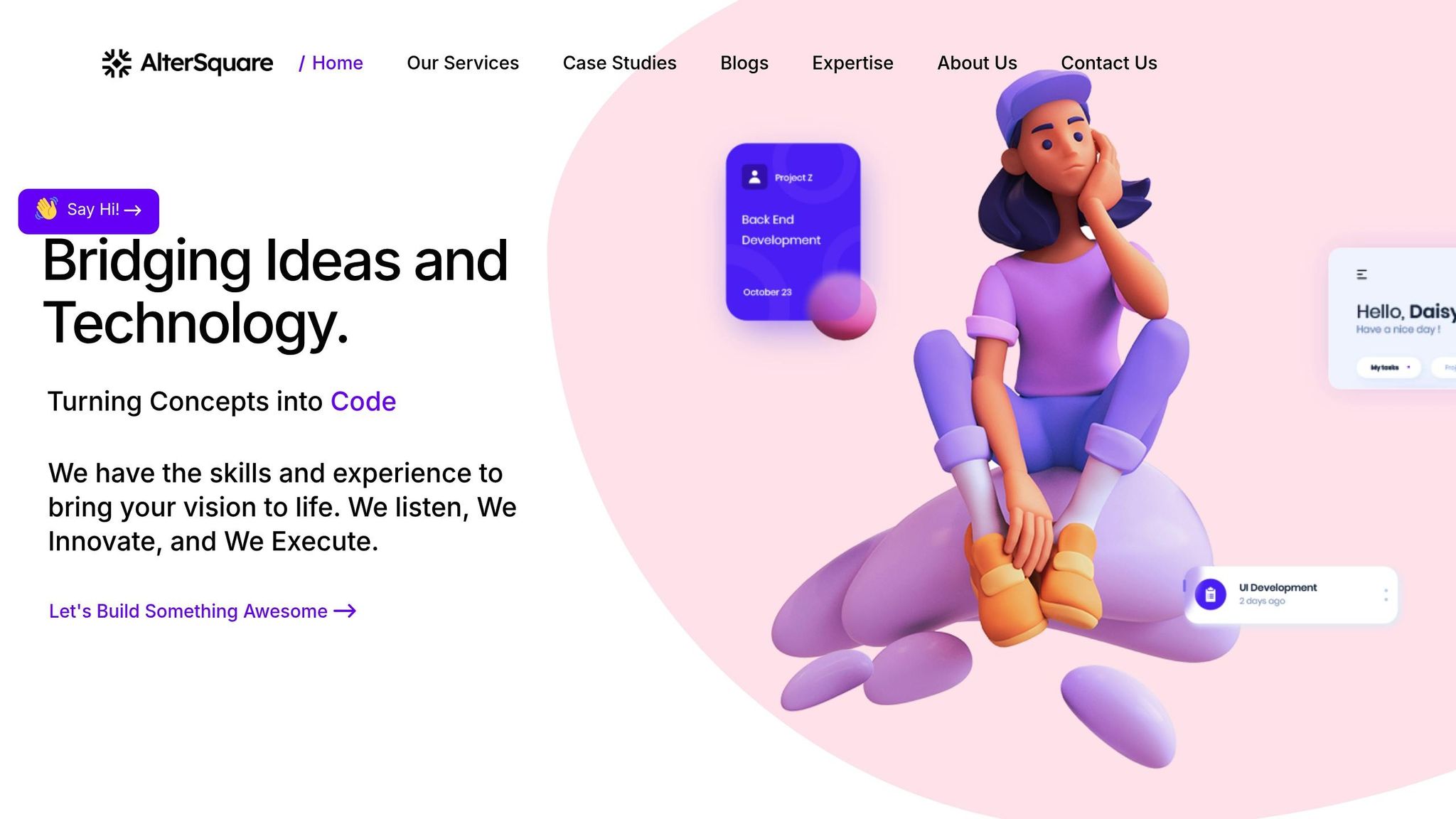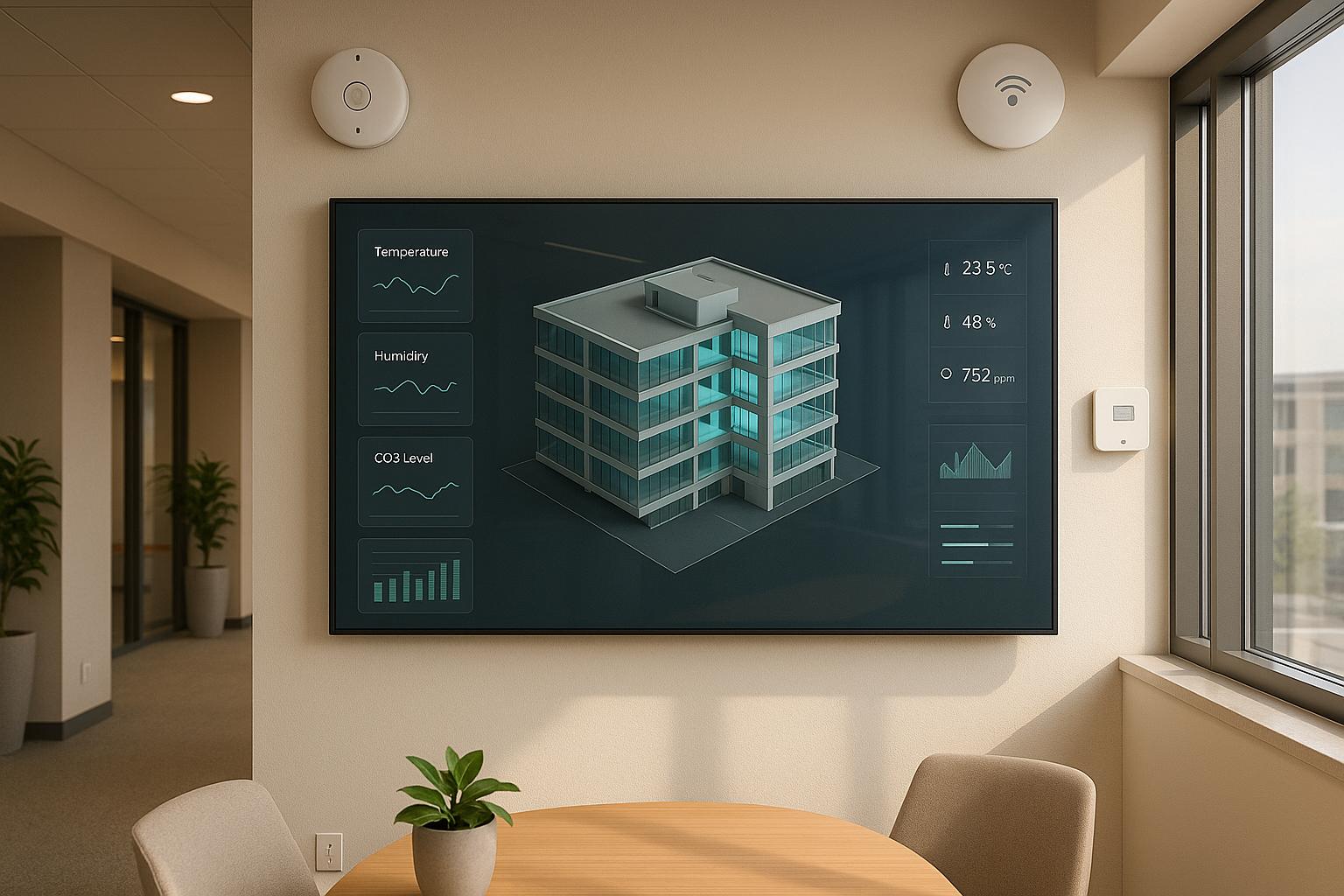Overcoming Adoption Barriers: Getting AEC Professionals to Embrace New Technology
Taher Pardawala April 26, 2025
Struggling to get your AEC team to embrace new tools? Here’s what you need to know:
- Main Challenges: Resistance to change, skill gaps, budget constraints, legacy system conflicts, and data security concerns.
- Solutions: Leadership support, focused training, phased tech integration, ROI tracking, and robust data security.
- Success Stories: Companies like Penta Building Group and Okland Construction reduced costs, improved collaboration, and accelerated project timelines by adopting tools like PlanGrid and Procore.
Quick Tip: Start small with phased implementation, involve employees early, and highlight tangible benefits to build trust and engagement.
Keep reading for detailed strategies and real-world examples to drive tech adoption in your firm.
Construction Technology Adoption
Main Tech Adoption Barriers in AEC
While new technology offers clear advantages, several obstacles hinder its adoption in the AEC industry. Understanding these challenges is crucial for developing effective solutions, which will be explored in later sections.
Employee Pushback
Resistance to change is a major hurdle. Many AEC professionals are deeply accustomed to their established workflows and tools. Concerns fueling this resistance include:
- Fear of losing jobs due to automation
- Preference for familiar processes over new, untested methods
Training and Skill Gaps
A growing skills shortage in the AEC sector directly affects the adoption of new technology. Two key issues drive this problem:
- Decline in New Talent: Fewer individuals are entering the AEC industry, especially in engineering roles. As seasoned professionals retire, the gap in expertise widens.
- Lack of Technical Skills: Many new hires lack proficiency in essential tools like CAD and BIM, requiring companies to invest heavily in training. This places additional strain on already tight budgets.
Legacy System Conflicts
Compatibility issues between older systems and newer technologies create significant challenges. These conflicts can disrupt workflows and cause delays. Here are some common examples:
| Legacy System | Integration Issue | Resulting Problem |
|---|---|---|
| AutoCAD | Difficulty converting to Revit elements | Misinterpretation of spatial requirements |
| ArchiCAD | IFC classification mismatches | Incorrect category mapping in Revit |
| Older BIM versions | Data format incompatibility | Coordination challenges across project teams |
Budget Constraints
Financial limitations, especially for smaller firms, make adopting new technology difficult. Key cost-related challenges include:
- High upfront costs for software licenses
- Expenses for creating and delivering training programs
- Temporary productivity losses during the transition period
- Hardware upgrades needed to support advanced systems
Data Security Risks
Concerns about data security also slow technology adoption. Firms must address issues like:
- Protecting sensitive project details
- Ensuring client data privacy
- Enabling secure collaboration among multiple stakeholders
- Meeting industry compliance standards
Solutions for Tech Adoption
Overcoming technology adoption challenges in the AEC industry requires practical and well-thought-out strategies.
Management Support Methods
Strong leadership plays a critical role in ensuring successful technology integration. Here are some effective strategies:
| Strategy | Steps | Expected Outcome |
|---|---|---|
| Clear Communication | Regularly share benefits and ROI metrics | Reduces resistance and builds buy-in |
| Employee Involvement | Create tech committees with staff input | Encourages ownership and engagement |
| Progress Recognition | Reward tech adoption milestones | Motivates employees and speeds adoption |
| Resource Allocation | Allocate time and budget for training | Eases the transition process |
"Change really needs to start from the top-down meaning ownership and/or upper management need to accept, promote and support the changes that are being implemented." – Jason Peckovitch, BIM Manager for Garver’s Buildings Business Unit [1]
Skills Development Plan
Training programs should focus on practical skills that meet both immediate and future needs. Here’s how to make training effective:
- Initial Assessment
Assess current skill levels to pinpoint knowledge gaps. This ensures training programs are tailored to actual needs. - Customized Learning Paths
Design training modules specific to each role, aligning them with daily workflows for direct applicability. - Hands-on Practice
Incorporate real project scenarios into training. This allows employees to apply new skills in a controlled environment before tackling live projects.
Compatible Tech Selection
Choosing the right technology is essential for smooth adoption. Focus on these priorities:
- Open Standards Adoption: Select BIM-compatible tools to enable easy data sharing.
- Integration Testing: Test new tools with existing workflows to ensure compatibility.
- Phased Implementation: Introduce technology in stages to minimize disruptions.
Once compatibility is confirmed, demonstrating clear financial benefits can further justify the investment.
ROI Analysis Steps
Measuring ROI provides a clear picture of how new technology improves productivity [2]. Follow these steps to create a detailed ROI analysis:
- Track time saved on routine tasks.
- Measure reductions in errors and rework.
- Calculate improvements in resource use.
- Monitor faster and more efficient project delivery.
Pairing ROI analysis with strong security measures can boost user confidence in the new technology.
Data Protection Steps
Strong security protocols are essential for building trust and protecting sensitive project data. Implement these measures:
| Security Measure | Purpose | Implementation Priority |
|---|---|---|
| Access Control | Safeguard sensitive data | High |
| Encryption | Secure data transmission | High |
| Backup Systems | Prevent data loss | Medium |
| Audit Trails | Monitor system usage | Medium |
"Socialize (communicate) your ‘why’ with leadership and all impacted parties, along with a detailed plan for implementation, testing, training, go-live, and post-go-live help." – Deltek [2]
sbb-itb-51b9a02
AEC Tech Success Stories
Examples from the industry show how overcoming challenges with technology adoption can lead to measurable benefits for professionals in architecture, engineering, and construction (AEC).
Team Collaboration Results
Penta Building Group boosted team coordination during the construction of the 550,000-square-foot Caesars Forum in Las Vegas, NV. By using PlanGrid, they managed over 600 workers on a demanding 24/7 schedule.
"PlanGrid is our single source of truth", says Cliff Cole, virtual design and construction (VDC) manager for Penta. "PlanGrid reduces rework; I can’t say by how much because it is hard to quantify what doesn’t exist. But I can say it absolutely reduces rework." [3]
The platform acted as a central hub for project information, ensuring all team members had access to the latest data. This coordination was key to completing the project within its tight 18-month deadline.
Another example highlights how technology can significantly cut costs by streamlining processes.
Cost Reduction Through Tech
Okland Construction saved both time and money while working on the BioFire manufacturing and diagnostic facility in Salt Lake City. By leveraging Procore’s Models and Coordination Issues tools, they achieved impressive results:
| Impact Area | Results |
|---|---|
| Schedule Reduction | Finished 2 months early |
| Installation Efficiency | Avoided multiple reinstallations |
| Coordination Improvement | Minimized costly rework with precise space planning |
"I’ve seen projects where they’ve reinstalled a piece of duct four or five times just because they didn’t do any coordination", says Dan Shaffer, Okland’s ICT Manager. "When the governor came and asked if we could get it done quickly, we were able to hand the project over two months early. Procore definitely played a role in terms of making it productive and keeping everybody on task."
Better Client Relations
Technology also enhances client satisfaction by improving project delivery and communication.
The $158 million Cosumnes Bridge Replacement Project, led by Caltrans and Granite Construction, is a great example. They used tools like 2D/3D models, Trimble SiteVision AR, drone data, and GPS machine control systems to streamline the project.
"Having consolidated, consistent data for construction helps fast-track the process", explains Anthony Abitz, Project Manager at Granite Construction. "If you can connect internal and external teams with a single source of reliable data over time, it will drastically improve productivity and results will be a better-performing asset over the entire service life", adds Aaron Chamberlin, Senior Transportation Engineer at Caltrans [4].
This approach not only improved safety for 70,000 daily vehicle trips but also allowed the project to finish a full year ahead of schedule, showcasing how technology can elevate both client satisfaction and project outcomes.
Tech Implementation Resources
AEC firms can address adoption challenges by using integration tools and learning programs that make tech implementation smoother and more efficient.
System Connection Tools
Adopting new technology often means bridging the gap between older and newer systems. Tools like Building Information Modeling (BIM) help exchange data across platforms, while file conversion features simplify transitions between software.
Here’s a quick guide to cross-platform file compatibility:
| Format | Best Use Case | Recommended Workflow |
|---|---|---|
| IFC4 | Sharing across platforms | File linking |
| IFC2x3 | Migrating data | File importing |
| DWG | Working with older AutoCAD files | Direct conversion |
Learning Resources
Autodesk Premium and Enterprise users benefit from coaching programs designed to improve efficiency.
"Coaching improved efficiency by 10% at overall project level by eliminating repetitive tasks and focusing on the use of information in more impactful ways like design discussions, coordination, 4D and 5D." – Nandini J, Design Technology Head, Adrianse Global [5]
Similarly, David C, BIM Manager at Grupo TYPSA, noted a 5% boost in operational efficiency after introducing team training through Autodesk’s Premium coaching program [5].
For additional support, companies like AlterSquare offer services to speed up tech adoption.
AlterSquare Solutions

AlterSquare helps modernize outdated systems while keeping operations running smoothly. Their I.D.E.A.L Delivery Framework ensures new technology can be implemented in just 90 days, giving firms a quick way to test and validate digital transformation efforts.
AlterSquare’s services for AEC firms include:
- Redesigning system architecture for better scalability
- Optimizing performance without interrupting workflows
- Integrating modern tech stacks seamlessly
- Enhancing UI/UX to improve user engagement and adoption
Conclusion
Main Points
Bringing new technology into AEC firms requires a clear focus on people, processes, and tools. Companies that take a well-thought-out approach often experience better project efficiency and stronger team collaboration.
Here are some key strategies and their impacts:
| Strategy | Impact | Implementation Focus |
|---|---|---|
| Management Support | Guides organizational direction | Clear communication of benefits |
| Skills Development | Eases resistance to change | Hands-on training programs |
| System Integration | Maintains workflow consistency | Use of open standards |
| Performance Tracking | Confirms return on investment (ROI) | Measurable outcomes |
"People are more likely to adopt something new if they can see how it helps them to better achieve their day-to-day goals and objectives – making them more productive." – Deltek [2]
Providing varied learning options and practical tools is crucial for smooth technology adoption.
Next Steps
Kick off your transformation with a detailed roadmap that includes clear milestones and measurable goals. AlterSquare’s I.D.E.A.L Delivery Framework offers a structured 90-day plan to modernize systems without disrupting operations.
Use these strategies to guide your next steps:
- Identify training needs and set up a tech steering committee to oversee the process.
- Create a phased implementation plan with specific success metrics.
Collaborating with experienced solution providers can speed up adoption and ensure better outcomes.
FAQs
How can AEC firms encourage employees to adopt new technology?
Encouraging employees in AEC firms to embrace new technology requires thoughtful planning and communication. Start by clearly explaining the benefits of the technology, such as increased efficiency, reduced errors, or improved collaboration. Involve employees early in the process by seeking their input and feedback, which helps build a sense of ownership and reduces resistance.
Provide a step-by-step implementation plan with clear timelines, milestones, and training opportunities. Make sure employees feel supported through hands-on training, accessible resources, and ongoing assistance. Recognize and celebrate successes, no matter how small, to motivate employees and highlight the positive impact of the new technology.
Finally, frame the adoption as an evolution of current workflows rather than a disruptive change. This perspective helps employees see the technology as a tool to enhance their work, not replace it.
How can AEC companies integrate new technology with their existing legacy systems?
To successfully integrate new technology with legacy systems, AEC companies should focus on interoperability by adopting open standards, such as Building Information Modeling (BIM). These standards enable seamless data exchange across different teams and project phases.
Additionally, using tools that are designed for compatibility with both existing systems and modern workflows can streamline the transition. Establishing clear data exchange protocols ensures consistent communication between software platforms, reducing errors and improving efficiency. Taking these steps can help bridge the gap between traditional systems and innovative solutions, ensuring smoother adoption and long-term success.
How can AEC professionals measure the ROI of adopting new technology?
Measuring ROI for technology adoption in the AEC industry involves comparing the cost of investment with the value of benefits gained. Start by identifying the initial costs, such as software licenses, hardware, training, and implementation expenses. Then, evaluate the measurable benefits, like reduced project delays, lower rework costs, and improved productivity.
To calculate ROI, use this simple formula: (Benefits – Costs) / Costs. For example, if a $50,000 investment results in $150,000 in savings and efficiencies, the ROI would be 200%. By focusing on both tangible and intangible benefits, such as improved collaboration and client satisfaction, you can better demonstrate the value of technology adoption to stakeholders.








Leave a Reply